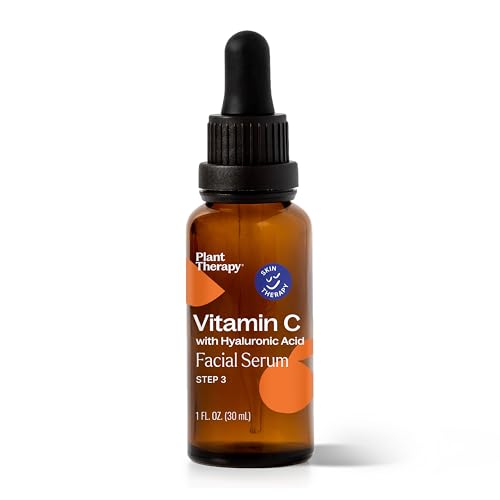
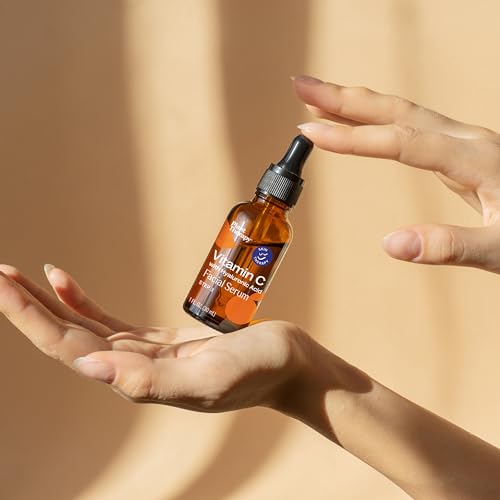
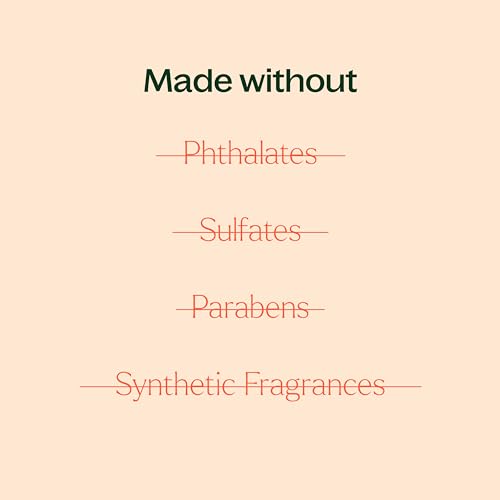
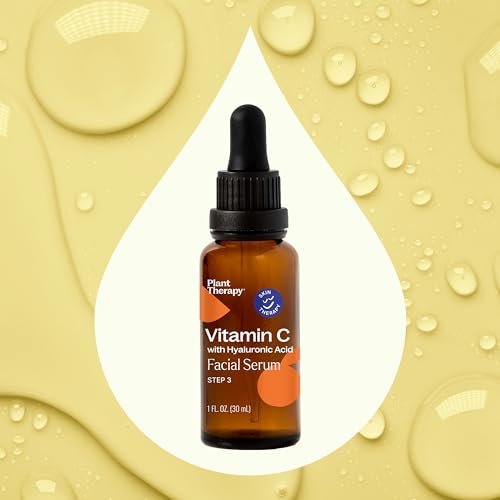
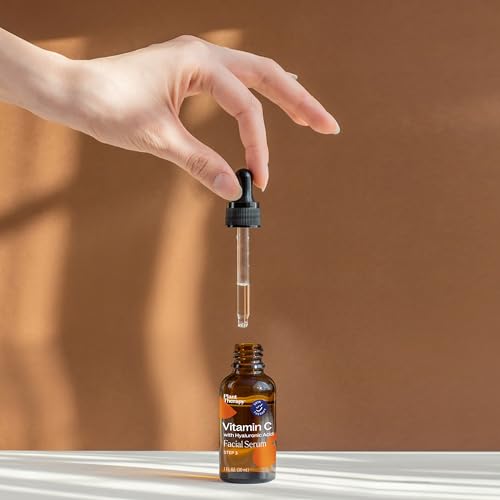
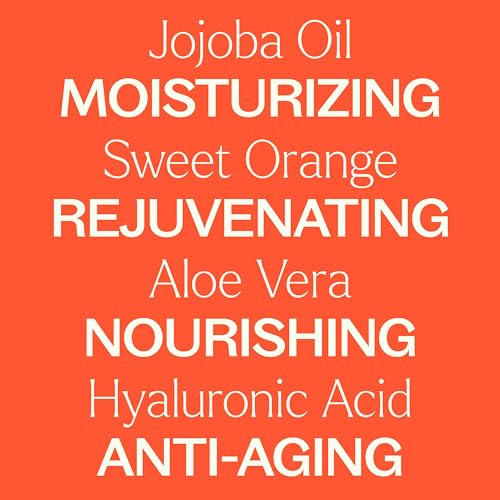
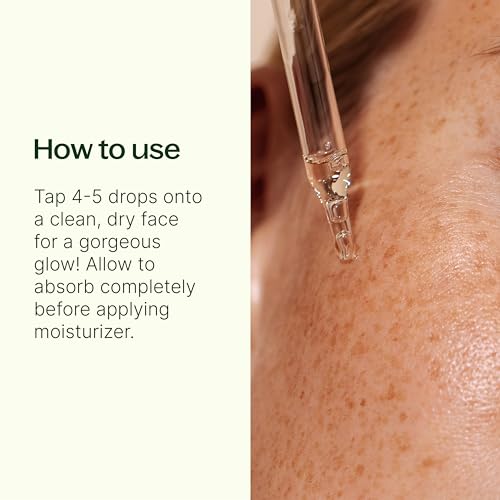
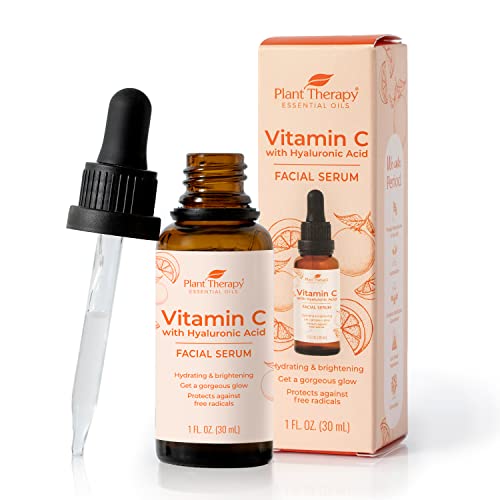
Plant Therapy Face Serum - Brightening & Anti-Aging with Vitamin C, Hyaluronic Acid - 1 oz


Citric Acid
Medium RiskCitric acid is an alpha hydroxy acid used in personal care products primarily for its role as a pH adjuster and natural preservative. It occurs naturally in citrus fruits and is commonly utilized in various formulations for its chelating properties and mild exfoliation benefits.
Sustai Insights
Citric acid offers functional benefits as an effective preservative and pH stabilizer, contributing to product longevity and stability. It is biodegradable and derived from renewable sources. Health risks are low, with minimal concerns regarding carcinogenicity, allergies, and reproductive toxicity. However, moderate use restrictions exist due to potential irritation at high concentrations. Environmental risks are limited, as citric acid is not known to accumulate in ecosystems. Regulatory agencies have no significant advisories against its use. Overall, it is assessed as a medium-risk ingredient, with safe usage practices recommended and alternatives available.
Ferulic Acid
Medium RiskFerulic acid is a phenolic compound primarily found in plant cell walls. It serves as an antioxidant in cosmetic and skincare products, protecting the skin from free radical damage and enhancing product stability.
Sustai Insights
Ferulic acid offers functional benefits as a potent antioxidant, contributing to skin protection and product efficacy. It is generally recognized as safe, with low concerns for carcinogenicity, allergies, and reproductive toxicity. However, moderate use restrictions exist, and its environmental impact is minimal. Regulatory bodies have not issued significant warnings. Overall, ferulic acid is associated with a medium risk level due to potential use restrictions, and safe usage practices should be adhered to. Alternative antioxidants may provide similar benefits.
Phenoxyethanol
Medium RiskPhenoxyethanol is a preservative used in cosmetics and personal care products to prevent microbial growth and extend shelf life. It is commonly found in formulations such as lotions, creams, and serums.
Sustai Insights
Phenoxyethanol serves effectively as a preservative, ensuring product stability and safety by inhibiting microbial growth. It is considered to have low health risks regarding carcinogenicity, allergies, and reproductive toxicity. However, moderate use restrictions exist, and regulatory bodies have advised caution in specific applications. Environmental concerns include its potential as a pollutant, although it is not highly bioaccumulative. Overall, the ingredient presents a medium risk level, with safe usage practices recommended and alternative preservatives available for those seeking greener options.
Xanthan Gum
Low RiskXanthan gum is a polysaccharide, a sugar-based compound produced by the fermentation of glucose or sucrose. It is commonly used as a thickening agent and stabilizer in various food and cosmetic products due to its ability to improve texture and prevent ingredient separation.
Sustai Insights
Xanthan gum serves effectively as a thickener and stabilizer, enhancing product texture and consistency. It is biodegradable and typically derived from renewable sources, supporting sustainability efforts. Health risks are minimal, with low concerns regarding carcinogenicity, allergies, and reproductive toxicity. Environmental impact is similarly low, posing no significant hazards. Regulatory agencies, including the FDA, regard it as safe for use, with no significant restrictions. Overall, xanthan gum is assessed as low risk, making it a suitable ingredient in formulations.
Sodium Acetylhyaluronate
Low RiskSodium acetylhyaluronate is a sodium salt derivative of hyaluronic acid, commonly used in cosmetic formulations for its hydrating properties. It functions primarily as a humectant, attracting moisture to the skin and helping to maintain hydration levels in various personal care products.
Sustai Insights
Sodium acetylhyaluronate is recognized for its effective moisture-retaining properties, enhancing skin hydration and improving product texture. It has low health risks, with negligible concerns regarding carcinogenicity, allergies, or reproductive toxicity. Environmentally, it poses minimal risks and is not associated with significant pollution or bioaccumulation. Regulatory assessments indicate no current restrictions. Overall, it is considered low risk, making it a favorable ingredient in cosmetic formulations.
Ethylhexylglycerin
Low RiskEthylhexylglycerin is a glyceryl ether utilized primarily as a skin-conditioning agent and preservative in cosmetic formulations. It enhances the efficacy of preservatives and serves as a humectant, helping to retain moisture in the skin. This ingredient is commonly found in various personal care products.
Sustai Insights
Ethylhexylglycerin offers functional benefits as an effective preservative and skin-conditioning agent, contributing to product longevity and moisture retention. Health risks are generally low, with minor concerns regarding allergic contact dermatitis and irritant potential. Environmentally, it poses minimal risks, not being recognized as a pollutant or bioaccumulative. Regulatory bodies have imposed few restrictions, indicating its safety for use. Overall, its risk level is assessed as low, making it a viable option in cosmetic formulations. For those seeking alternatives, ingredients like propanediol may serve similar functions with potentially lower irritation profiles.
Simmondsia Chinensis (Jojoba)
Low RiskSimmondsia chinensis, commonly known as jojoba, is an oil derived from the seeds of the jojoba plant. It is commonly used in cosmetic formulations for its moisturizing properties, acting as an emollient and skin conditioning agent.
Sustai Insights
Jojoba oil offers functional benefits such as effective skin moisturization and is biodegradable, with sustainable sourcing practices. Health risks are low, with minimal concerns regarding carcinogenicity, allergies, and reproductive toxicity. Environmental impact is negligible, with no pollutant or bioaccumulation potential. Regulatory status is favorable with no significant restrictions noted. Overall, it is assessed as low risk, and safe usage practices should be maintained. Alternatives include other plant-derived oils like argan or almond oil, which may provide similar benefits.
Vegetarian Glycerin
Low RiskVegetarian glycerin, also known as glycerol, is a colorless, odorless, and viscous liquid derived from plant sources. It is primarily used as a humectant, solvent, and emollient in various personal care products, helping to retain moisture and improve texture.
Sustai Insights
Vegetarian glycerin offers functional benefits as an effective humectant, promoting hydration and skin smoothness. It is biodegradable and typically sustainably sourced. Health risks associated with glycerin are low, with no significant concerns for carcinogenicity, allergens, or reproductive toxicity. Environmental risks are minimal, and it is not subject to major regulatory warnings. Overall, the risk level for this ingredient is low, making it a safe choice in formulations. Safe usage practices include ensuring proper concentrations in products, and alternatives such as propylene glycol exist but may have differing properties.
Sodium Phytate
Low RiskSodium phytate is a complex sodium salt of phytic acid, primarily used in cosmetic formulations as a chelating agent. It helps to stabilize formulations by binding metal ions, which can improve product efficacy and shelf life.
Sustai Insights
Sodium phytate offers functional benefits by enhancing product stability and is considered to have low health risks, with no significant associations with carcinogenicity, allergies, or reproductive toxicity. Environmentally, it poses minimal risks, as it is not considered a pollutant or bioaccumulative. Regulatory status indicates no significant restrictions. Overall, the ingredient is assessed as low risk. However, users should practice safe usage and consider alternatives like other chelating agents if desired.
Olive Oil Glycereth 8 Esters
Low RiskOlive oil glycereth-8 esters are esters derived from olive oil and glycerin, commonly used as emollients and emulsifiers in cosmetic formulations. They help improve the texture and stability of products, enhancing skin feel and moisture retention.
Sustai Insights
Olive oil glycereth-8 esters offer functional benefits, including effective emollience and emulsification, and are typically biodegradable and derived from renewable sources. Health risks appear low, with no significant carcinogenic or allergenic concerns reported. Environmental impact is minimal, though contamination concerns exist. Regulatory status shows no restrictions, indicating a low overall risk level. For optimal safety, it's advised to use as directed, with alternatives like jojoba oil esters available for those seeking different formulations.
Water
Low RiskWater is a clear, colorless liquid essential for various biological processes. It serves as a solvent in formulations, facilitating the dissolution of other ingredients and enhancing product texture and application. Additionally, water plays a crucial role in hydration and is a key component in many cosmetic and personal care products.
Sustai Insights
Water is an effective solvent and hydrator, contributing to the texture and efficacy of formulations. It is biodegradable and generally regarded as safe, with low concerns regarding carcinogenicity, allergies, and reproductive toxicity. However, excessive water usage can lead to environmental concerns, particularly regarding resource depletion. Regulatory bodies do not impose restrictions on water use in cosmetics. Overall, the risks associated with water are low, making it a safe and essential ingredient.
Ascorbic Acid (Vitamin C)
Low RiskAscorbic acid (Vitamin C) is a naturally occurring antioxidant essential for various biological functions, including collagen synthesis and immune response. It is commonly used in cosmetic and food products for its preservative properties and ability to enhance skin brightness.
Sustai Insights
Ascorbic acid provides functional benefits as an effective antioxidant and preservative, contributing to skin health and product stability. It is generally recognized as safe with low health risks, including minimal concerns for carcinogenicity and allergies. Environmentally, it poses low risks, as it is biodegradable and does not bioaccumulate. Regulatory bodies like the FDA have not imposed significant restrictions on its use. Overall, the ingredient presents a low risk, with safe usage practices ensuring consumer safety, and alternatives such as natural extracts exist for those seeking different formulations.
Sodium Citrate
Low RiskSodium citrate is used in cosmetic formulations primarily as a buffering agent, helping to stabilize pH levels. It is derived from citric acid and is commonly found in various personal care products to enhance their efficacy and stability.
Sustai Insights
Sodium citrate offers functional benefits such as effective pH regulation and acts as a mild preservative. It is generally recognized as safe with low risks for cancer, allergies, and reproductive toxicity. Environmental concerns are minimal, with no significant pollutant potential or bioaccumulation. Regulatory bodies like the FDA and COSMOS have no major restrictions on its use. Overall, sodium citrate presents a low risk, making it a viable ingredient in cosmetic formulations. Safe usage practices should be followed, and alternatives are not typically necessary.
Aloe Barbadensis (Aloe Vera)
Low RiskAloe barbadensis, commonly known as aloe vera, is derived from the succulent leaves of the aloe plant. It is widely used in cosmetic products for its soothing and moisturizing properties, often included for its potential skin benefits.
Sustai Insights
Aloe vera provides effective moisturizing and soothing benefits for the skin, supporting its use in various cosmetic formulations. It is generally considered safe, with low concerns for carcinogenicity, allergies, and reproductive toxicity. Regulatory bodies impose minimal restrictions, underlining its low-risk profile. While environmental impacts are minimal, its sustainability credentials depend on sourcing practices. Safe usage includes topical application, with no significant adverse effects reported. Alternatives exist, such as plant-based gels, but aloe vera remains a favored choice due to its low-risk assessment.
Tocopherol, D Alpha
Low RiskTocopherol, specifically d-alpha tocopherol, is a naturally occurring form of Vitamin E. It is commonly used in cosmetic and personal care products primarily for its antioxidant properties, helping to protect formulations from oxidation and extend shelf life.
Sustai Insights
D-alpha tocopherol provides effective antioxidant benefits, contributing to product stability. It is sustainably sourced and generally regarded as safe, with low concerns regarding carcinogenicity, allergies, and reproductive toxicity. However, there are minor concerns about endocrine disruption. Regulatory bodies have not imposed significant restrictions, indicating low overall risk. Recommended usage practices include adhering to established safe concentration thresholds. Alternatives, such as other forms of Vitamin E or plant-based antioxidants, may also be considered.
Xanthan Gum
Low RiskXanthan gum is a polysaccharide, a sugar-based compound produced by the fermentation of glucose or sucrose. It is commonly used as a thickening agent and stabilizer in various food and cosmetic products due to its ability to improve texture and prevent ingredient separation.
Sustai Insights
Xanthan gum serves effectively as a thickener and stabilizer, enhancing product texture and consistency. It is biodegradable and typically derived from renewable sources, supporting sustainability efforts. Health risks are minimal, with low concerns regarding carcinogenicity, allergies, and reproductive toxicity. Environmental impact is similarly low, posing no significant hazards. Regulatory agencies, including the FDA, regard it as safe for use, with no significant restrictions. Overall, xanthan gum is assessed as low risk, making it a suitable ingredient in formulations.
Sodium Acetylhyaluronate
Low RiskSodium acetylhyaluronate is a sodium salt derivative of hyaluronic acid, commonly used in cosmetic formulations for its hydrating properties. It functions primarily as a humectant, attracting moisture to the skin and helping to maintain hydration levels in various personal care products.
Sustai Insights
Sodium acetylhyaluronate is recognized for its effective moisture-retaining properties, enhancing skin hydration and improving product texture. It has low health risks, with negligible concerns regarding carcinogenicity, allergies, or reproductive toxicity. Environmentally, it poses minimal risks and is not associated with significant pollution or bioaccumulation. Regulatory assessments indicate no current restrictions. Overall, it is considered low risk, making it a favorable ingredient in cosmetic formulations.
Citric Acid
Medium RiskCitric acid is an alpha hydroxy acid used in personal care products primarily for its role as a pH adjuster and natural preservative. It occurs naturally in citrus fruits and is commonly utilized in various formulations for its chelating properties and mild exfoliation benefits.
Sustai Insights
Citric acid offers functional benefits as an effective preservative and pH stabilizer, contributing to product longevity and stability. It is biodegradable and derived from renewable sources. Health risks are low, with minimal concerns regarding carcinogenicity, allergies, and reproductive toxicity. However, moderate use restrictions exist due to potential irritation at high concentrations. Environmental risks are limited, as citric acid is not known to accumulate in ecosystems. Regulatory agencies have no significant advisories against its use. Overall, it is assessed as a medium-risk ingredient, with safe usage practices recommended and alternatives available.
Ethylhexylglycerin
Low RiskEthylhexylglycerin is a glyceryl ether utilized primarily as a skin-conditioning agent and preservative in cosmetic formulations. It enhances the efficacy of preservatives and serves as a humectant, helping to retain moisture in the skin. This ingredient is commonly found in various personal care products.
Sustai Insights
Ethylhexylglycerin offers functional benefits as an effective preservative and skin-conditioning agent, contributing to product longevity and moisture retention. Health risks are generally low, with minor concerns regarding allergic contact dermatitis and irritant potential. Environmentally, it poses minimal risks, not being recognized as a pollutant or bioaccumulative. Regulatory bodies have imposed few restrictions, indicating its safety for use. Overall, its risk level is assessed as low, making it a viable option in cosmetic formulations. For those seeking alternatives, ingredients like propanediol may serve similar functions with potentially lower irritation profiles.
Simmondsia Chinensis (Jojoba)
Low RiskSimmondsia chinensis, commonly known as jojoba, is an oil derived from the seeds of the jojoba plant. It is commonly used in cosmetic formulations for its moisturizing properties, acting as an emollient and skin conditioning agent.
Sustai Insights
Jojoba oil offers functional benefits such as effective skin moisturization and is biodegradable, with sustainable sourcing practices. Health risks are low, with minimal concerns regarding carcinogenicity, allergies, and reproductive toxicity. Environmental impact is negligible, with no pollutant or bioaccumulation potential. Regulatory status is favorable with no significant restrictions noted. Overall, it is assessed as low risk, and safe usage practices should be maintained. Alternatives include other plant-derived oils like argan or almond oil, which may provide similar benefits.
Vegetarian Glycerin
Low RiskVegetarian glycerin, also known as glycerol, is a colorless, odorless, and viscous liquid derived from plant sources. It is primarily used as a humectant, solvent, and emollient in various personal care products, helping to retain moisture and improve texture.
Sustai Insights
Vegetarian glycerin offers functional benefits as an effective humectant, promoting hydration and skin smoothness. It is biodegradable and typically sustainably sourced. Health risks associated with glycerin are low, with no significant concerns for carcinogenicity, allergens, or reproductive toxicity. Environmental risks are minimal, and it is not subject to major regulatory warnings. Overall, the risk level for this ingredient is low, making it a safe choice in formulations. Safe usage practices include ensuring proper concentrations in products, and alternatives such as propylene glycol exist but may have differing properties.
Sodium Phytate
Low RiskSodium phytate is a complex sodium salt of phytic acid, primarily used in cosmetic formulations as a chelating agent. It helps to stabilize formulations by binding metal ions, which can improve product efficacy and shelf life.
Sustai Insights
Sodium phytate offers functional benefits by enhancing product stability and is considered to have low health risks, with no significant associations with carcinogenicity, allergies, or reproductive toxicity. Environmentally, it poses minimal risks, as it is not considered a pollutant or bioaccumulative. Regulatory status indicates no significant restrictions. Overall, the ingredient is assessed as low risk. However, users should practice safe usage and consider alternatives like other chelating agents if desired.
Olive Oil Glycereth 8 Esters
Low RiskOlive oil glycereth-8 esters are esters derived from olive oil and glycerin, commonly used as emollients and emulsifiers in cosmetic formulations. They help improve the texture and stability of products, enhancing skin feel and moisture retention.
Sustai Insights
Olive oil glycereth-8 esters offer functional benefits, including effective emollience and emulsification, and are typically biodegradable and derived from renewable sources. Health risks appear low, with no significant carcinogenic or allergenic concerns reported. Environmental impact is minimal, though contamination concerns exist. Regulatory status shows no restrictions, indicating a low overall risk level. For optimal safety, it's advised to use as directed, with alternatives like jojoba oil esters available for those seeking different formulations.
Water
Low RiskWater is a clear, colorless liquid essential for various biological processes. It serves as a solvent in formulations, facilitating the dissolution of other ingredients and enhancing product texture and application. Additionally, water plays a crucial role in hydration and is a key component in many cosmetic and personal care products.
Sustai Insights
Water is an effective solvent and hydrator, contributing to the texture and efficacy of formulations. It is biodegradable and generally regarded as safe, with low concerns regarding carcinogenicity, allergies, and reproductive toxicity. However, excessive water usage can lead to environmental concerns, particularly regarding resource depletion. Regulatory bodies do not impose restrictions on water use in cosmetics. Overall, the risks associated with water are low, making it a safe and essential ingredient.
Ferulic Acid
Medium RiskFerulic acid is a phenolic compound primarily found in plant cell walls. It serves as an antioxidant in cosmetic and skincare products, protecting the skin from free radical damage and enhancing product stability.
Sustai Insights
Ferulic acid offers functional benefits as a potent antioxidant, contributing to skin protection and product efficacy. It is generally recognized as safe, with low concerns for carcinogenicity, allergies, and reproductive toxicity. However, moderate use restrictions exist, and its environmental impact is minimal. Regulatory bodies have not issued significant warnings. Overall, ferulic acid is associated with a medium risk level due to potential use restrictions, and safe usage practices should be adhered to. Alternative antioxidants may provide similar benefits.
Ascorbic Acid (Vitamin C)
Low RiskAscorbic acid (Vitamin C) is a naturally occurring antioxidant essential for various biological functions, including collagen synthesis and immune response. It is commonly used in cosmetic and food products for its preservative properties and ability to enhance skin brightness.
Sustai Insights
Ascorbic acid provides functional benefits as an effective antioxidant and preservative, contributing to skin health and product stability. It is generally recognized as safe with low health risks, including minimal concerns for carcinogenicity and allergies. Environmentally, it poses low risks, as it is biodegradable and does not bioaccumulate. Regulatory bodies like the FDA have not imposed significant restrictions on its use. Overall, the ingredient presents a low risk, with safe usage practices ensuring consumer safety, and alternatives such as natural extracts exist for those seeking different formulations.
Sodium Citrate
Low RiskSodium citrate is used in cosmetic formulations primarily as a buffering agent, helping to stabilize pH levels. It is derived from citric acid and is commonly found in various personal care products to enhance their efficacy and stability.
Sustai Insights
Sodium citrate offers functional benefits such as effective pH regulation and acts as a mild preservative. It is generally recognized as safe with low risks for cancer, allergies, and reproductive toxicity. Environmental concerns are minimal, with no significant pollutant potential or bioaccumulation. Regulatory bodies like the FDA and COSMOS have no major restrictions on its use. Overall, sodium citrate presents a low risk, making it a viable ingredient in cosmetic formulations. Safe usage practices should be followed, and alternatives are not typically necessary.
Aloe Barbadensis (Aloe Vera)
Low RiskAloe barbadensis, commonly known as aloe vera, is derived from the succulent leaves of the aloe plant. It is widely used in cosmetic products for its soothing and moisturizing properties, often included for its potential skin benefits.
Sustai Insights
Aloe vera provides effective moisturizing and soothing benefits for the skin, supporting its use in various cosmetic formulations. It is generally considered safe, with low concerns for carcinogenicity, allergies, and reproductive toxicity. Regulatory bodies impose minimal restrictions, underlining its low-risk profile. While environmental impacts are minimal, its sustainability credentials depend on sourcing practices. Safe usage includes topical application, with no significant adverse effects reported. Alternatives exist, such as plant-based gels, but aloe vera remains a favored choice due to its low-risk assessment.
Tocopherol, D Alpha
Low RiskTocopherol, specifically d-alpha tocopherol, is a naturally occurring form of Vitamin E. It is commonly used in cosmetic and personal care products primarily for its antioxidant properties, helping to protect formulations from oxidation and extend shelf life.
Sustai Insights
D-alpha tocopherol provides effective antioxidant benefits, contributing to product stability. It is sustainably sourced and generally regarded as safe, with low concerns regarding carcinogenicity, allergies, and reproductive toxicity. However, there are minor concerns about endocrine disruption. Regulatory bodies have not imposed significant restrictions, indicating low overall risk. Recommended usage practices include adhering to established safe concentration thresholds. Alternatives, such as other forms of Vitamin E or plant-based antioxidants, may also be considered.
Phenoxyethanol
Medium RiskPhenoxyethanol is a preservative used in cosmetics and personal care products to prevent microbial growth and extend shelf life. It is commonly found in formulations such as lotions, creams, and serums.
Sustai Insights
Phenoxyethanol serves effectively as a preservative, ensuring product stability and safety by inhibiting microbial growth. It is considered to have low health risks regarding carcinogenicity, allergies, and reproductive toxicity. However, moderate use restrictions exist, and regulatory bodies have advised caution in specific applications. Environmental concerns include its potential as a pollutant, although it is not highly bioaccumulative. Overall, the ingredient presents a medium risk level, with safe usage practices recommended and alternative preservatives available for those seeking greener options.
Discover radiant skin with Plant Therapy's Vitamin C Face Serum, enriched with Hyaluronic Acid for deep hydration and anti-aging benefits. This lightweight serum is formulated to brighten your complexion while reducing the appearance of fine lines and wrinkles, making it a must-have in your skincare routine.
- Powerful Anti-Aging Benefits: This serum contains Vitamin C and Hyaluronic Acid that work together to diminish sun damage and photoaging effects, promoting a youthful glow.
- Hydrating Formula: With added moisture from Hyaluronic Acid, this serum helps your skin retain hydration, leaving it plump and supple.
- Nourishing Ingredients: Enriched with Ferulic Acid and Vitamin E, this serum protects against environmental stressors while nourishing the skin.
- Easy to Use: Simply cleanse your face, apply a few drops, massage gently, and follow with a moisturizer for optimal results.
- Ethically Crafted: Plant Therapy is committed to high-quality, affordable skincare, ensuring you make a conscious choice for your beauty regimen.
Subscribe & Save with Sustai
- Best Price Guarantee: Always enjoy the lowest prices on sustainable home essentials.
- No Surprises: We’ll notify you before shipping. No hidden fees, ever.
- You’re in Charge: Change, pause, or cancel your subscription anytime with ease.
- Eco-Friendly Deliveries: Our grouped shipments mean less packaging and lower emissions.
Join us on a sustainable journey. Special offers for a limited time! Prices and promotions may change.
Recommended Products
Discover radiant skin with Plant Therapy's Vitamin C Face Serum, enriched with Hyaluronic Acid for deep hydration and anti-aging benefits. This lightweight serum is formulated to brighten your complexion while reducing the appearance of fine lines and wrinkles, making it a must-have in your skincare routine.
- Powerful Anti-Aging Benefits: This serum contains Vitamin C and Hyaluronic Acid that work together to diminish sun damage and photoaging effects, promoting a youthful glow.
- Hydrating Formula: With added moisture from Hyaluronic Acid, this serum helps your skin retain hydration, leaving it plump and supple.
- Nourishing Ingredients: Enriched with Ferulic Acid and Vitamin E, this serum protects against environmental stressors while nourishing the skin.
- Easy to Use: Simply cleanse your face, apply a few drops, massage gently, and follow with a moisturizer for optimal results.
- Ethically Crafted: Plant Therapy is committed to high-quality, affordable skincare, ensuring you make a conscious choice for your beauty regimen.

You can have at most 2 Sustainable Steals products in your cart
Customer Reviews
Customers’ View
Customers appreciate the effectiveness and hydrating properties of this face serum, noting its ability to leave skin feeling soft and smooth. Many users highlight the serum's nourishing texture and pleasant scent, with one stating it has become their 'new favorite product.' Positive feedback frequently emphasizes the serum's benefits for aging skin, with several customers reporting that it makes their skin appear brighter and firmer. Additionally, many find the ingredient quality to be clean and safe for use. Overall, customers feel satisfied with the product's performance and enjoy its eco-friendly formulation, making it a valued addition to their skincare routines.
AI-generated from the text of customer reviewsThis product is rated 4.5 of 5.0 stars.
It has received 2 reviews.




